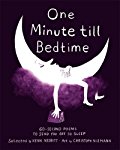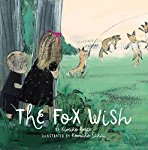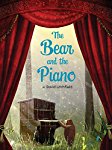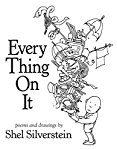When by daughter was little, every night we would go through a series of rituals. She would have her bath and put on her jim jams, and then she brush her teeth and her hair. Then, up in her bedroom, she would choose the stuffed animals she was going to sleep with, and the book she wanted me to read to her. After story time we would turn out the main light and she and I would sing our goodnight song together. Of course, Elise would try to find ways to prolong her bedtime. She would ask for another story, another round of our song, a different stuffed animal...and so on.
Today's poetry title was written for children of course, but it was also written for all those wonderful, patient grownups who have to put procrastinating little ones to bed every night. The book is packed with short little poems that are perfect for those "just one more" moments. They give little children a little something extra before they finally close their eyes and go to sleep.
 One minute to Bedtime: 60 Second poems to send you off tosleep
One minute to Bedtime: 60 Second poems to send you off tosleep
Today's poetry title was written for children of course, but it was also written for all those wonderful, patient grownups who have to put procrastinating little ones to bed every night. The book is packed with short little poems that are perfect for those "just one more" moments. They give little children a little something extra before they finally close their eyes and go to sleep.
 One minute to Bedtime: 60 Second poems to send you off tosleep
One minute to Bedtime: 60 Second poems to send you off tosleep
Selected by Kenn Nesbitt
Illustrated by Christoph Niemann
Poetry Book
For ages 4 to 6
Little Brown, 2016, 978-0316341219
Many grownups hear, on a regular basis, the words “just
one more!” at bedtime; one more story is required before the light can be
switched off. The child in their life is sleepy, warm, and cozy in bed, and yet
he or she is not quite ready to fall asleep. Almost, but not quite.
This book of
poems is just the thing to pull off the shelf when those words are uttered. The
collection is packed with short poems that “feed the imagination, fuel the love
of reading,” and send the child “off to sleep in a snap.”
We begin with a
poem called Whew! which takes us
through the evening and bedtime rituals of a young child. Dinner is eaten, the
trash is taken out, the child gets clean, and teeth are brushed. Pajamas are
slipped on, pillows are fluffed, and Ted is picked up and carried off to bed.
It is only after all these things are done that the child is at last free “to
read.”
Then there is a
poem about how every book we read “makes a home inside your head.” In another a
child tells us how much he or she likes “old stories” that are full “inky
drawings of / enchanted castles,
clanking chains, / pirate treasure” and many other marvelous things. The child
does not mind that the storybooks that contain these tales are dusty, and that
they have tattered pages. After all, the stories that lie between the covers
might be old, but once, perhaps many years ago, they “were new.”
In addition to
books and stories, bedtime would not be complete without stuffed animals. In
the poem Stuffed Animal Collection by
Eileen Spinelli, we encounter a child who has so many stuffed animals that the mother
calls her child’s bedroom a zoo.
In this book
there are poems of every flavor, color, shape, and size. In short, there is
something here for every mood and inclination, and each one is a perfect gem
that is just right for that, almost-asleep-but-not-quite interlude.








